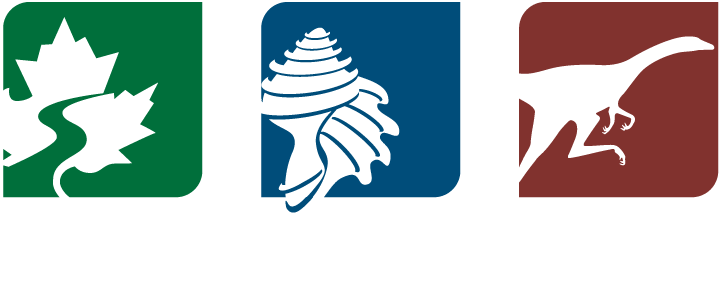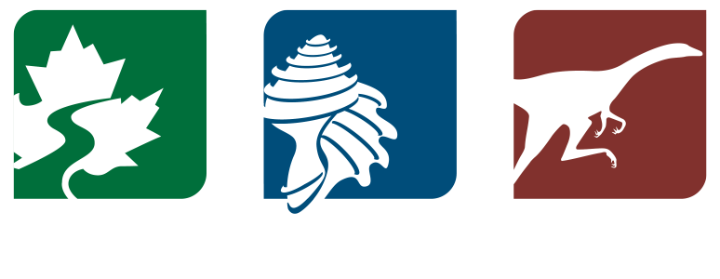Sandy Carlson
Sandy Carlson
Sandy Carlson
Invertebrate Paleontologist
Sandra (“Sandy”) Carlson is an invertebrate paleontologist. She studies living and fossil brachiopods, marine (saltwater) invertebrates that have a shell made up of two valves (parts) connected by a hinge.
Sandy's career interests were first kindled as a child growing up on a lake in Minnesota, where she immersed herself in nature and natural history. She was the first in her family to attend college, going to the University of California, Santa Cruz, after moving to California from Minnesota prior to high school. Rather than continuing as a physics major in college—she loved physics but was not very good at it—she stumbled upon earth sciences. She has never regretted her decision to change majors. Léo Laporte and Kay Behrensmeyer were hugely important mentors to her.
Sandy completed her M.S. and Ph.D. at the University of Michigan, working with Dan Fisher and Phil Gingerich, who were both outstanding mentors and allowed her to pursue research on both vertebrates and invertebrates, living and fossil. In 1989, Phil Gingerich named the fossil horse Hyracotherium sandrae (now called Sifrhippus sandrae) after Sandy (“sandrae” is the Latin form meaning “Sandra’s”). Sandy had found “the most complete specimen” of the animal, which came from the Eocene (about 56 to 34 million years ago) of Wyoming, as a graduate student.
Sandy Carlson receiving the Gilbert Harris award from PRI director Warren Allmon at the Geological Society of America annual meeting in 2019. Photo courtesy of Rob Ross.
There were almost no postdoctoral opportunities in paleontology when Sandy completed her dissertation, but she was fortunate enough to be offered a position at the University of California, Davis, where she has been on the faculty for over three decades. She is currently a Professor and Director of the CalTeach/Mathematics and Sciences Teaching Program.
Sandy's research interests are in invertebrate paleontology, focusing on brachiopod evolutionary biology, systematics (scientific naming, classification, and reconstruction of evolutionary relationships), and evolutionary history. She helped coordinate an international group of researchers that revised the brachiopod volumes of the Treatise on Invertebrate Paleontology, a major ongoing project documenting fossil invertebrates. She has additionally done research into brachiopod development and growth, the form of the branchiopod hinge, and brachiopod paleoecology, among other topics.
Sandy has been active in the Paleontological Society since she was a graduate student. She has served on committees for the Association of Women Geoscientists (AWG) and the Paleontological Society, and she was honored to have served as the Paleontological Society President from 2012 to 2013. In 2016, Sandy was given the AWG Encourage Award. In 2019, she was given the Gilbert Harris Award by the Paleontological Research Institution for her outstanding contributions to systematic paleontology.
Daring to Dig Interview
In this video, Sandy discusses how she got interested in paleontology and how she views the expectations that young and upcoming paleontologists face today. This interview was recorded in 2019.
Selected technical works by Sandy Carlson
Baker, P.G., and S.J. Carlson. 2010. The early ontogeny of Jurassic thecideoid brachiopods and its contribution to the understanding of thecideoid ancestry. Palaeontology 53: 645–667. Link
Carlson, S.J. 1995. Phylogenetic relationships among extant brachiopods. Cladistics 11: 131–197. Link
Carlson, S.J. 2016. The evolution of Brachiopoda. Annual Review of Earth and Planetary Sciences 44: 409–438. Link
Carlson, S.J., and P.C. Fitzgerald. 2007. Sampling taxa, estimating phylogeny and inferring macroevolution: an example from Devonian terebratulide brachiopods. Earth and Environmental Science Transactions of the Royal Society of Edinburgh 98: 311–325. Link
Fitzgerald, P.C., and S.J. Carlson. 2006. Examining the latitudinal diversity gradient in Paleozoic terebratulide brachiopods: Should singleton data be removed? Paleobiology 32: 367–386. Link
Selected commentaries by Sandy Carlson
Carlson, S.J. 2013. Paleontologist Barbie. Priscum 20(1): 4–5. Link
Carlson, S.J., and P. Gingerich. 2012. Paleontological activism. Priscum 19(2): 1–2. Link
Further reading
Allmon, W. 2019. Citation [for Sandy Harris, 2019 Gilbert Award winner]. 23 September 2019. Link
Gingerich, P.D. 1989. New earliest Wasatchian mammalian fauna from the Eocene of northwestern Wyoming: Composition and diversity in a rarely sampled high-floodplain assemblage. University of Michigan Papers on Paleontology 28. Link
NSF. 2012. Evolution of earliest horses driven by climate change. National Science Foundation (NSF) News Release, 23 February 2012. (Story with a reconstruction of the fossil horse Sifrhippus sandrae.) Link
McQueary, K. no date. FOSSIL speaker series: Dr. Sandra Carlson visits Southern California Paleontological Society. myFOSSIL. Link



